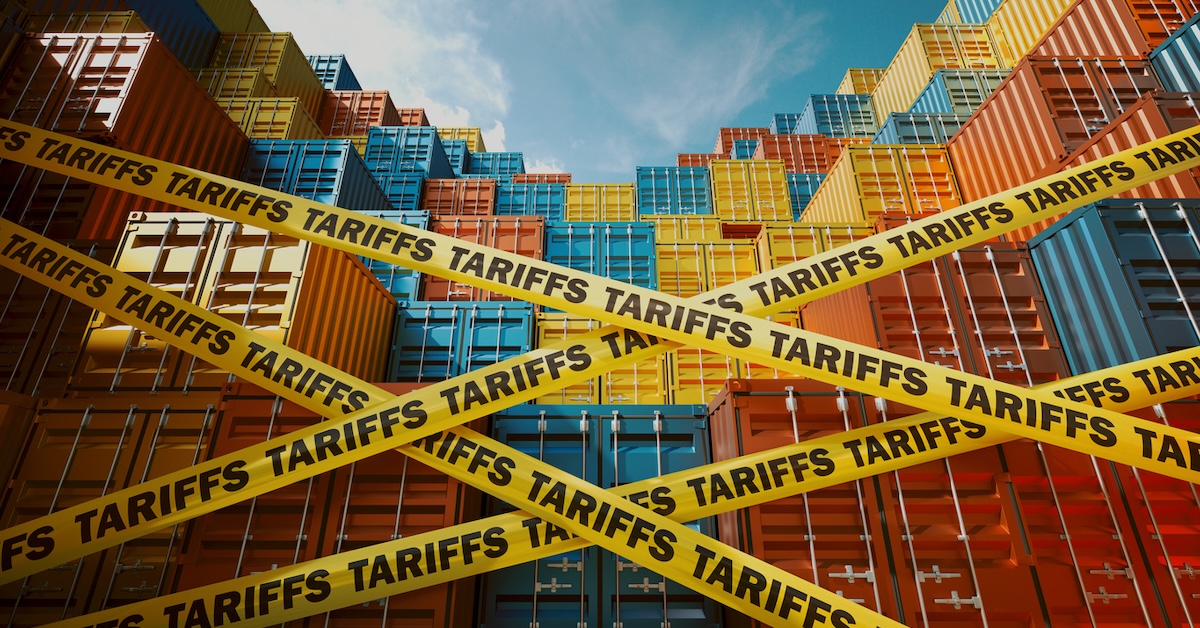Overview
Tariffs introduced in 2024–25 have reshaped the economics of defense manufacturing almost overnight. According to the U.S. International Trade Commission’s (USITC) 2023 report, Economic Impact of Section 232 and 301 Tariffs on U.S. Industries, nearly all tariff costs were borne by U.S. companies—not foreign exporters. U.S. manufacturers faced billions in new expenses, causing downstream production losses, delayed investments, and weakened supply chain stability. These burdens are particularly acute in sectors critical to national defense, where cost absorption, compliance, and contract inflexibility constrain contractor responses.
The Dual-Track Impact of Tariffs
The tariffs are producing both direct cost increases and operational disruptions:
- Import prices rose almost dollar-for-dollar with the tariff rate (USITC, 2023, pp. 14–16).
- Over 100,000 exclusion requests were filed, reflecting the widespread burden (USITC, 2023, p. 24).
- Key sectors such as auto parts, electronics, and precision tools saw output losses averaging $3.5 billion annually (USITC, 2023, p. 27).
- Even domestic suppliers were impacted, as cost increases rippled through the industrial base (USITC, 2023, p. 33).
Navigating the 2024–25 Tariff Wave in U.S. Defense Contracting
For government contractors, especially those with fixed-price contracts, the tariff landscape poses compounding challenges. Increased input costs, weakened supply chains, and slow policy response from federal agencies leave contractors with few options to pass on cost burdens. Contractors that integrate supply-chain intelligence with sound contracting strategies—invoking appropriate DFARS clauses, pursuing equitable adjustments, and redesigning for domestic inputs—can shield both margins and mission schedules.
The recent shift in U.S. trade policy has already prompted defense primes like GE and Northrop Grumman to revise financial forecasts downward. Smaller suppliers, meanwhile, risk collapse or subcontract default—threatening broader DoD acquisition resilience.
Legal and Contractual Pathways for Relief
This section of the case study summarizes the most viable contract clauses and legal strategies available for contractors seeking relief from tariff-related impacts:
- Cost-Type Contracts: May allow recovery of tariff-related increases under FAR 31.205-41, but risk shifting provisions must be reviewed.
- FAR 52.229-3: Provides for price adjustments due to new or increased federal duties but imposes strict procedural and evidentiary burdens.
- Economic Price Adjustment (EPA) Clauses: May provide limited recovery (up to 10%) if pre-negotiated and tariffs are identified as a contingency.
- Duty-Free Entry (FAR 52.225-8): Allows certain imports to be exempted from duties if properly identified and approved by the CO.
- Excusable Delays (FAR 52.249 clauses): Tariff-driven supply chain disruptions may warrant delivery extensions.
- Constructive Acceleration: May apply if the contractor is denied schedule relief but must still perform on time.
- Subcontract Terms: Price escalation, reopener, or force majeure clauses may protect prime contractors through careful flow-down.
- Extraordinary Relief (Public Law 85-804): Rare but applicable when contractor losses impair essential defense performance.
- Legal Doctrines: Mutual mistake, impracticability, or frustration of purpose may be argued but only in extreme, well-documented cases.
Government Defenses and Risk of Denial
The government may invoke Sovereign Acts Doctrine or challenge claims based on technical limitations of clauses. Unless relief is grounded in a remedy-granting clause, contractors risk total denial—underscoring the importance of documentation, internal analysis, and proactive engagement with the CO.
Strategic Guidance for Contractors
To stay ahead, contractors should:
- Monitor ongoing developments in U.S. trade and procurement policy.
- Identify which contracts are vulnerable and review applicable FAR clauses.
- Request clause inclusion (e.g., FAR 52.229-3, EPA) in future solicitations.
- Reengineer supply chains and negotiate protective terms with suppliers.
- Document impacts and notify the CO immediately upon anticipated disruption.
- Assess use of tariff reclassification, TIB, or bonded warehousing where feasible.
Conclusion
The 2024–25 tariff wave presents a pivotal moment for defense contractors. While large contractors may absorb some shocks, smaller suppliers face existential threats. With careful planning, clause leverage, and strategic engagement with government contracting officers, contractors can mitigate exposure and remain competitive in a volatile policy environment.


